Against All Odds: The Story of EK/AB1F – 2024
Having operated last year as EK/AB1F from the exact same location I was to work this year, I took for granted that this second effort would be a cakewalk. Was I wrong!
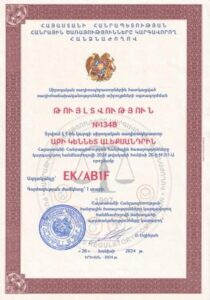
Murphy’s Law struck from the get-go in multiple and, by the very nature of that infamous law, in totally unanticipated ways in every which way remotely possible. The pleasant three-hour drive from Tbilisi airport in the neighboring country of Georgia, past the famous glass-domed bridge with its Morse code lights, to the QTH in Stepanavan did not prepare me for what was in store for EK/AB1F this year.
First off, I learned that the contractor engaged last year had reneged on the erection of the tower for the antenna. The small tower which was horizontal on the ground last year remained exactly where it was. I thought that still left me the G5RV and the multiband dipole, both of which I had used the previous year with some success. But the G5RV was nowhere to be found. It was finally discovered that the contractor’s workers, not realizing it was an antenna, had cut it up and put the wires to other uses. All was not lost, I thought and worked on the lone antenna remaining – the multiband dipole – replacing the broken spreaders with new ones that I had brought along with me. I also installed the balun that Bob-KC3TTH had kindly tested and repaired for me. But when it was ready, I found no one to help me with hoisting the antenna on the iron pipes erected last year. The first three days went by thus.
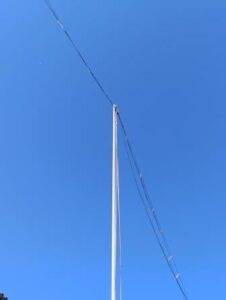
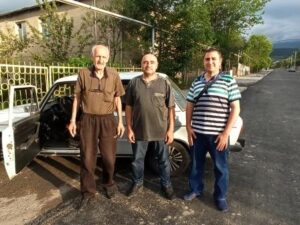
Fortunately, I had brought with me this time a stand-by radio, a Yaesu FT-450D which my friend Ike–W3IKE had located for me just two days before my departure. I have no idea what made me bring along this second transceiver with me. Last year, on both trips (to Armenia and to Bhutan), I had carried only a single rig. This lifesaver, the FT-450D, was the only transceiver I would use for the entire operation in EK-land this time.
Murphy’s Law had yet another surprise up its sleeve. The station finally commenced operations after the initial four-day delay. The QTH, Stepanavan, Lori Marz (district), at an altitude of 1,375 meters (4,500 feet) above sea-level is known for its cooler temperatures and frequent rains and storms. Sure enough, in the late afternoon of the third day after operations commenced, a thunderstorm struck. When I was back on the air after a safe interval after the storm, I discovered that only 15-meters was operable and the SWR was dangerously high on the other two bands of 10 and 20. A quick look outside next morning showed the reason why. The wind had caused the multiband dipole to rotate on its horizontal axis and brought two of the wires into close proximity with each other on one half of the antenna. With no help available, my friend and host, agreed to keep a watchful eye on me as I, surrounded by itchy nettles, lowered the multi-band dipole, added a paracord stay to keep the wires from getting tangled up, and pulled it back up again. A huge sigh of relief to find that the SWRs had come down to where they should be.
Murphy was not done with EK/AB1F yet. Another three days into the operation and everything was running according to plan when there was a sudden power outage for the entire town. Ordinarily, this would only have been a small bother, except that the outage had occurred in the middle of a QSO while I was transmitting. When the power came back, the transceiver turned back on but would not transmit. What really are the chances of both transceivers failing?
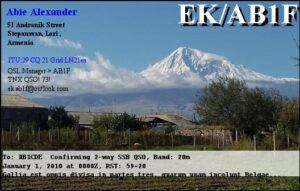 I had no test equipment (not even a multi-meter) with me to troubleshoot the problem. I resigned myself to my fate and decided that the odds were stacked up against me this time. I considered giving up on radio and spending the rest of my time in Armenia sightseeing and looking up old friends.
I had no test equipment (not even a multi-meter) with me to troubleshoot the problem. I resigned myself to my fate and decided that the odds were stacked up against me this time. I considered giving up on radio and spending the rest of my time in Armenia sightseeing and looking up old friends.
But three hours later I remembered the wisdom of Zen and the Art of Motorcycle Maintenance by Robert M. Pirsig and my perspective changed. Considering the fact that the airfare sunk into the trip was many times higher than the cost of the FT-450D, I decided to cut some corners and try and make do with what I had. I snipped off the two in-line fuses and connected the power cable directly to the transceiver. To my astonishment and, I might add, immense relief, the radio powered up and, when tested at low output power, actually transmitted! I did not waste another moment and went into full power (100W) transmit mode and resumed normal operations. This was the first time I had taken such a risk. (To complete the story, a week later, Haik–EK1RR sent me spare fuses from the capital, Yerevan, that I, lacking a soldering iron, patched on with insulation tape!)
From then on the station operated without a hitch for what remained of my time in Armenia.
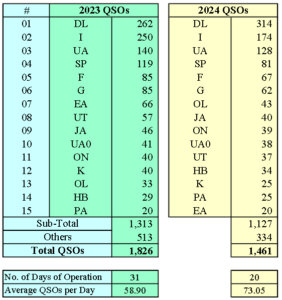 So, what was achieved at the 2024 edition of EK/AB1F? It was not about vastly improved signals with a commercial multiband beam antenna atop a fancy, if small, antenna tower, with the luxury of an antenna rotor, as I had hoped. It was not about the peace of mind that comes with having two transceivers at the ready. Nor was it about having test tools and antenna analyzers to troubleshoot problems. Instead, this effort took me back to the very basics of amateur radio. Back to my own beginnings in the hobby when I had fashioned my own dipoles and, with no other amateur radio operator in a 250 kilometer (160-mile radius), had done most troubleshooting largely on my own.
So, what was achieved at the 2024 edition of EK/AB1F? It was not about vastly improved signals with a commercial multiband beam antenna atop a fancy, if small, antenna tower, with the luxury of an antenna rotor, as I had hoped. It was not about the peace of mind that comes with having two transceivers at the ready. Nor was it about having test tools and antenna analyzers to troubleshoot problems. Instead, this effort took me back to the very basics of amateur radio. Back to my own beginnings in the hobby when I had fashioned my own dipoles and, with no other amateur radio operator in a 250 kilometer (160-mile radius), had done most troubleshooting largely on my own.
A couple of times I fondly recalled the club back home. A club spoils you. Everything is set up and ready to go. Only rarely does one have to do any troubleshooting or adjustments. Even then one is never alone. This year’s activity from EK-land reignited the amateur qualities that had remained largely dormant in me – the spirit of experimentation, problem-solving, making-do, resilience, and taking calculated risks. A bit of the old can-do attitude came back as well. Additionally, my faith in dipoles was restored!
 In return for all this, I hope I ran a station that adhered to the highest standards of amateur radio. My aim was to operate EK/AB1F like an ordinary in-country amateur radio station and not along the lines of a DXpedition. I can only hope I succeeded in my aim to be an ordinary Armenian amateur radio station, if there is such a thing.
In return for all this, I hope I ran a station that adhered to the highest standards of amateur radio. My aim was to operate EK/AB1F like an ordinary in-country amateur radio station and not along the lines of a DXpedition. I can only hope I succeeded in my aim to be an ordinary Armenian amateur radio station, if there is such a thing.
One of the liberating joys was the realization that I myself was not hunting for ATNOs but, on the other hand, EK/AB1F was likely an ATNO for other stations. I hope I as able to provide all stations that I had a QSO with the pleasure of working EK. To this end, and in the spirit of ham radio, the logs were uploaded daily, even multiple times on some days, to LoTW, QRZ.com, eQS.cc, Club Log, and HAMLOG.online.
How do the two years, 2023 and 2024 compare?
In spite of Murphy’s law and all the obstacles that came my way, I was able to make a total of 1,461 QSOs in 20 days. The daily average of 73.05 QSOs was significantly higher than the 58.90 for 2023.
Isn’t it amazing what a dipole and 100 watts do!
Out of habit, I had been calling “CQ DX” when I realized that when operating from an exotic location such as EK, everything else was DX really. (By the way, I couldn’t get an EK in my own log this time and the solitary one I had in my log last year still remains to be confirmed.) So, I simplified my calls to just “CQ” also for the reason that the call EK/AB1F (even with the short 2X1 home call) was quite a mouthful and sometimes necessitated multiple repetitions to the frustration of both sides.
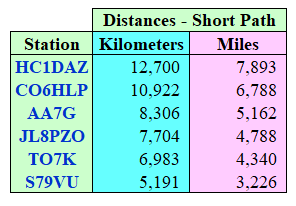 But on occasion the boot was on the other foot and a rare DX would call me, and it was a joy to respond as the time when Alberto–HC1DAZ called from Ecuador with a 59 signal. Other big surprises were calls out of the blue from Ravi–S79VU (Seychelles) and Hector–CO6HLP (Cuba). To their credit, all three confirmed the QSOs on LoTW by the next day following the QSO.
But on occasion the boot was on the other foot and a rare DX would call me, and it was a joy to respond as the time when Alberto–HC1DAZ called from Ecuador with a 59 signal. Other big surprises were calls out of the blue from Ravi–S79VU (Seychelles) and Hector–CO6HLP (Cuba). To their credit, all three confirmed the QSOs on LoTW by the next day following the QSO.
Unexplained QRN/QRM was one of the issues that I had faced in A5-land (Bhutan) last year. To some extent, the same problem popped up in Armenia as well, but I could not pinpoint the cause to be LED lamps at the neighbors or the streetlamps. When the noise came up to S5, especially in the evenings, all I could do was shut down operations till the situation improved.
One area where I stretched myself was to attempt “all-Russian” QSOs. All credit for this goes to Russian Phrases for Amateur Radio by Len Traubman–W6HJK (SK). Len’s legacy lives on even after he has passed on. My fluency of the basic QSO exchanges improved to such an extent that on a few occasions I received a torrent of Russian in return which was all but unintelligible and I had to quickly surrender.
To enable my friends and fellow amateurs around the world to partake (at least vicariously) of the rich Armenian experience with me (save the khorovats/shashlik and the wine, of course) I made it a point to post at least one picture each day on Facebook and Instagram. Here are a few chosen at random at the foot of this article.
As with all my previous visits to this great nation, I experienced only warm hospitality, friendliness, and a helping attitude.
Thank you – Շնորհակալություն (shnorhakalutyun) – Спасибо (spasibo) to all stations who found the time to have a QSO with EK/AB1F, but most especially to Anna Ayvazyan and her mother Agneza Ayvazyan, my friends and hosts, and to Haik–EK1RR, Hovik–EK6RO and Hovik’s father, for their assistance with setting up the station and for making the EK license a reality two years in a row.
Till next time then,
73 de Abie – EK/ABIF AB1F VU2ABE A52AA
Abie Alexander
© August 4, 2023
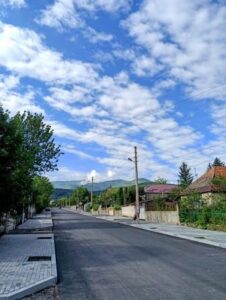
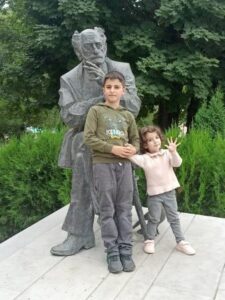


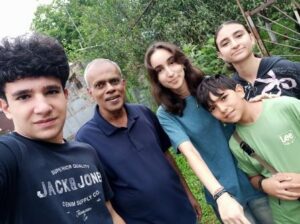
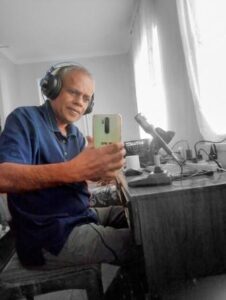
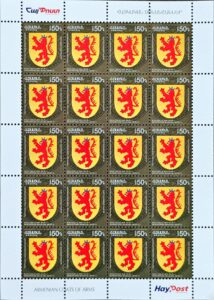
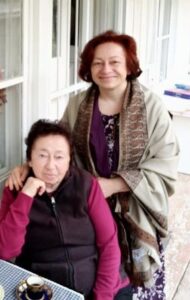
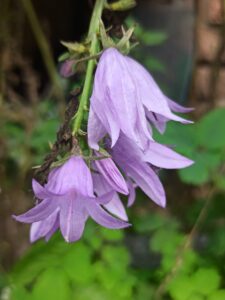
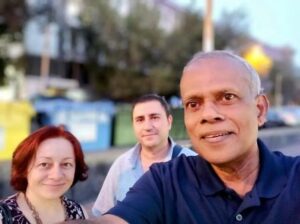


Thanks Abbie for the travelogue. You made us feel like we were there with you. 73, Ed, N1EK
Thank you, Ed! Appreciate your taking the time to read and provide the feedback. 73 de Abie-EK/AB1F
Wow! What an adventure this was for you. And, a real test of the whits. Against all odds, your persistance was rewarded, along with many happy ops who were fortunate to log a qso with you. Thank you for sharing the adventure! 73, NZ5i
Thank you, Kenny, for the kind words. 73 de Abie-EK/AB1F
Thanks very much for the 15m QSO, Abie! We also had one on 20m last year. So I went from no chance for an EK QSL to 2 confirmed on 2 different bands!
tnx agn es 73!
Go PVRC
todd
WB2ZAB
Thank you, Todd! I’m glad we had QSOs on 2-bands in 2 years from EK-land. Let’s hope for 10 meters on the next essay. Go PVRC!
73 de Abie – EK/AB1F
Hi Abie ….
Despite Mr. Murphy lurking around every corner you turn …. you seem to have done well. It always amazes me to what extent amateurs would go to pursue their hobby.
Take Care
Yeshey A51AA
Thank you, Yeshey, for your comment. And more for making the last visit to A5-land possible. Hope to see you again in Thimphu!
73 de Abie-EK/AB1F